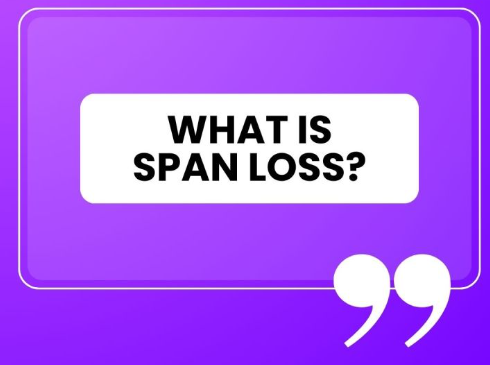In DWDM systems, calculating span loss is crucial to ensure signal integrity over long distances.
Span loss refers to the total attenuation that an optical signal experiences as it travels through a fiber link between two amplifiers or transceivers.
Correctly determining span loss helps design engineers maintain a high-quality signal, ensuring the network operates within acceptable power margins.
How to Calculate Span Loss:
Span loss is calculated based on various factors such as fiber length, attenuation per kilometer, splice loss, and connector loss. Here’s a simplified formula:
Span Loss (dB) = (Fiber Length x Fiber Attenuation) + Splice Loss + Connector Loss
-
Example 1:
- Fiber Length 80 km
- Fiber Attenuation: 0.22 dB/km
- Splice Loss: 0.1 dB/splice (with 2 splices)
- Connector Loss: 0.5 dB
- Span Loss = (80 x 0.22) + (2 x 0.1) + 0.5 = 17.6 + 0.2 + 0.5 = 18.3 dB
-
Example 2:
- Fiber Length: 100 km
- Fiber Attenuation: 0.25 dB/km
- Splice Loss: 0.05 dB/splice (with 4 splices)
- Connector Loss: 1 dB
- Span Loss = (100 x 0.25) + (4 x 0.05) + 1 = 25 + 0.2 + 1 = 26.2 dB
Why It Matters:
In DWDM systems, the power budget between transmitters and receivers must accommodate the span loss to ensure that the signal arrives with adequate strength for detection. Span loss that’s too high can lead to signal degradation, requiring additional amplification or compensation methods such as forward error correction (FEC) or optical regeneration.
Span loss also affects the design of optical amplifiers, transponder settings, and even dispersion compensation strategies. Understanding the span loss is essential for optimizing overall network performance, ensuring signal quality, and maintaining efficient data transmission across long distances.
References:
- Agrawal, G. P. (2012). Fiber-Optic Communication Systems. Wiley.
- Ramaswami, R., Sivarajan, K. N., & Sasaki, G. H. (2009). Optical Networks: A Practical Perspective. Elsevier.
- Keiser, G. (2011). Optical Fiber Communications. McGraw-Hill.

LinkedIn: ![]()